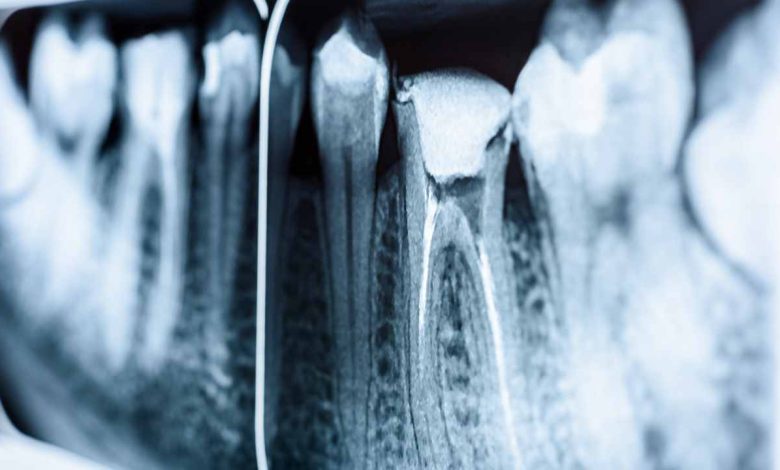Root Canal: A Comprehensive Guide to Dental Care
Root Canal: A Comprehensive Guide to Dental Care

Welcome to our comprehensive guide on root canals, a vital dental procedure aimed at preserving your natural teeth. Root canals often conjure images of discomfort and anxiety, but with modern advancements in dentistry, the process has become more efficient and comfortable than ever before. In this article, we’ll delve deep into the intricacies of root canals, covering everything from the procedure itself to aftercare tips for a smooth recovery. Whether you’re facing a root canal or simply curious about the process, we’re here to provide you with accurate, insightful information to alleviate any concerns.
Understanding Root Canals
A root canal, also known as endodontic therapy, is a dental procedure performed to repair and save a severely infected or damaged tooth. Contrary to popular belief, root canals are not as daunting as they may seem. In fact, they are highly effective in relieving pain and restoring oral health.
The Anatomy of a Tooth
Before delving into the specifics of root canals, let’s first understand the anatomy of a tooth. Each tooth consists of several layers:
- Enamel: The outermost layer of the tooth, providing protection against decay.
- Dentin: A hard layer beneath the enamel, comprising microscopic tubules that transmit sensations to the nerves.
- Pulp: The innermost layer, containing nerves, blood vessels, and connective tissue.
When the pulp becomes infected or inflamed due to deep decay, cracks, or trauma, a root canal becomes necessary to remove the infected tissue and alleviate discomfort.
Signs You Might Need a Root Canal
- Persistent toothache, especially when chewing or applying pressure.
- Sensitivity to hot or cold temperatures, even after the source is removed.
- Swollen gums or tenderness in the surrounding area.
- Darkening or discoloration of the tooth.
The Root Canal Procedure
Now that we’ve covered the basics, let’s explore what happens during a root canal procedure.
Initial Assessment and X-Rays
The process typically begins with a thorough examination by your dentist, who will assess the extent of the damage and determine if a root canal is necessary. X-rays may be taken to visualize the internal structure of the tooth and identify any signs of infection.
Anesthesia and Access Opening
Once the decision is made to proceed with a root canal, local anesthesia is administered to ensure a pain-free experience. A small access hole is then drilled into the affected tooth to reach the pulp chamber.
Removal of Infected Tissue
Using specialized instruments, the dentist carefully removes the infected or inflamed pulp along with any debris. The root canals are cleaned, shaped, and disinfected to eliminate bacteria and prevent further infection.
Filling and Sealing
After the canals are thoroughly cleaned, they are filled with a biocompatible material called gutta-percha to provide stability and prevent recontamination. The access opening is sealed to protect the tooth from future infection.
Recovery and Aftercare
Proper care following a root canal is crucial for a successful outcome and long-term oral health.
Managing Discomfort
It’s normal to experience some discomfort or sensitivity following a root canal, but this can usually be managed with over-the-counter pain medication and cold compresses. Avoid chewing on the treated tooth until any tenderness subsides.
Maintaining Oral Hygiene
Good oral hygiene practices are essential for preventing further complications. Continue to brush and floss regularly, paying extra attention to the treated tooth. Your dentist may recommend a special mouthwash or prescribe antibiotics to aid in the healing process.
Follow-Up Visits
Be sure to attend all scheduled follow-up appointments with your dentist to monitor your progress and ensure proper healing. X-rays may be taken periodically to assess the health of the tooth and surrounding tissues.
FAQs (Frequently Asked Questions)
How long does a root canal procedure take? A typical root canal procedure can be completed in one to two appointments, depending on the complexity of the case.
Is a root canal painful? With the advancements in modern dentistry and the use of local anesthesia, root canals are relatively painless procedures. You may experience some discomfort during recovery, but it is manageable with medication.
Are there any alternatives to a root canal? In some cases, extraction may be considered as an alternative to a root canal. However, preserving the natural tooth through a root canal is often the preferred option whenever possible.
Can I drive myself home after a root canal? It is generally safe to drive yourself home after a root canal, as the effects of local anesthesia wear off relatively quickly. However, if you have any concerns or feel lightheaded, it’s best to arrange for transportation.
How long does it take to recover from a root canal? Recovery time can vary from person to person, but most individuals can resume normal activities within a day or two following the procedure. Be sure to follow your dentist’s post-operative instructions for optimal healing.
Is it normal to experience sensitivity after a root canal? Some sensitivity or discomfort is normal after a root canal, especially in the first few days. This should gradually improve as the tooth heals. If you experience severe or prolonged pain, be sure to contact your dentist.
Conclusion
In conclusion, a root canal is a common dental procedure aimed at preserving your natural teeth and relieving pain caused by infection or damage. By understanding the process and following proper aftercare guidelines, you can ensure a smooth recovery and maintain optimal oral health. If you suspect you may need a root canal or have any questions, don’t hesitate to consult with your dentist. Your smile is worth preserving!









